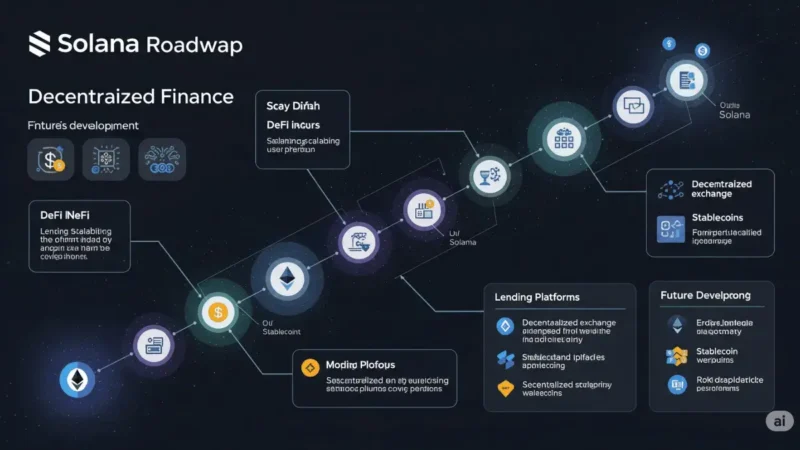Regulatory Sea Change: Brazil’s Central Bank Integrates Virtual Assets into the Traditional Financial System

Key Points (TL;DR)
- On November 10, 2025, Brazil’s Central Bank (BCB) issued a comprehensive new regulatory framework for virtual asset service providers (VASPs).
- The new rules mandate that all VASPs—including exchanges, custodians, and payment services—must obtain prior Central Bank authorization to operate.
- The framework extends banking-grade requirements (governance, internal controls, cybersecurity, consumer protection, and AML/CFT) to the virtual asset sector.
- A pivotal change is the classification of stablecoin-to-fiat transactions, and all crypto-fiat swaps, as foreign exchange operations (Forex).
- The goal is to strengthen security, prevent illicit activities like fraud and money laundering, and formally integrate the country’s massive virtual asset market into the regulated financial system. The rules take effect in February 2026.
Bridging the Divide: Crypto Regulation Meets Traditional Finance
Brazil, a country consistently recognized as a global leader in cryptocurrency adoption, has taken a decisive step toward formalizing the industry. On November 10, 2025, the Central Bank of Brazil (Banco Central do Brasil, or BCB) issued a landmark set of resolutions that fundamentally reshape the regulatory landscape for virtual asset service providers (VASPs).
The core of the new framework is the extension of existing, rigorous banking standards to all entities operating in the crypto space. This move signals a pivot from tentative oversight to full integration, ensuring that the virtual asset market operates with the same levels of transparency, security, and consumer protection as the traditional financial sector. The new rules, set to take effect in February 2026, are a direct response to the market’s explosive growth and the associated risks of fraud and illicit financial activities, particularly involving stablecoins.
The Mandate for Central Bank Authorization
Perhaps the most impactful measure of the new framework is the requirement that all virtual asset service providers—which include exchanges, wallets, payment facilitators, custodians, and brokers—must obtain explicit prior authorization from the Central Bank to operate.
This requirement elevates VASPs from loosely regulated technology firms to formally licensed financial institutions. To secure this authorization, companies must categorize themselves into one or more regulatory groups: virtual asset intermediaries, custodians, or brokers. Furthermore, they must satisfy a rigorous set of criteria drawn directly from the BCB’s rules for traditional banks:
- Corporate Governance: Establishing robust internal controls and management structures.
- Risk Management: Implementing comprehensive risk assessment and mitigation systems, including operational and financial risk.
- Cybersecurity: Developing stringent cybersecurity policies and incident response protocols.
- Consumer Protection: Adhering to standards for customer disclosure, transparency, and handling complaints.
- AML/CFT Compliance: Bolstering Anti-Money Laundering (AML) and Counter-Terrorist Financing (CFT) measures, including enhanced Know Your Customer (KYC) procedures.
This process ensures that only well-capitalized, compliant, and operationally mature entities can engage in the exchange and custody of virtual asset operations, creating a higher barrier to entry designed to safeguard the Brazilian financial system.
Stablecoins and the Foreign Exchange Classification
One of the most consequential decisions in the new BCB resolution is the classification of crypto-fiat transactions—specifically stablecoin-to-fiat swaps—as foreign exchange operations (Forex).
Anchoring Crypto within the Financial Framework
This classification has significant implications for how stablecoins are viewed and used within Brazil. Since stablecoins like USDC or USDT are pegged to foreign currencies (predominantly the US Dollar), their exchange for the Brazilian Real (BRL) now falls under the country’s existing foreign exchange market regulations. This is a crucial technical maneuver by the Central Bank to anchor the fast-growing stablecoin market within its established oversight framework.
Key Implications of the Forex Classification:
- International Transfers: The use of virtual asset transfers and payments for cross-border settlements is now subject to foreign exchange regulations. The BCB has reportedly introduced a cap of US$100,000 on transfers involving an unauthorized counterparty to curb illicit cross-border flows.
- Compliance and Reporting: VASPs facilitating these stablecoin swaps must now comply with the comprehensive reporting and due diligence requirements associated with Forex transactions, including detailed record-keeping of the origin and destination of funds.
- Taxation and Auditing: While specific tax details are handled by a separate agency, the Forex classification standardizes the operational treatment, making transactions more transparent for auditing purposes.
This change highlights the Central Bank’s acknowledgment of stablecoins’ increasing role not just as speculative investments but as fundamental rails for both domestic and international payments, often bypassing traditional banking channels. By bringing these stablecoin flows into the Forex mandate, the BCB is aiming to close regulatory gaps that have been exploited for money laundering and other illegal activities.
The Global and Domestic Context
Brazil’s regulatory shift is not happening in a vacuum. The country is a major global player in the crypto space, having seen hundreds of billions of dollars in virtual asset value received between 2024 and 2025. This high adoption rate, particularly in stablecoins, has made comprehensive regulation an urgent necessity.
Curbing Illicit Activity and Boosting Trust
The official pronouncements from the Central Bank emphasize that the primary motivation is to reduce the scope for scams, fraud, and money laundering. The lack of stringent governance and compliance standards in the past has left the door open for high-profile fraud cases. By applying banking standards, the BCB aims to raise the overall level of trust and security for consumers and institutional investors alike.
This convergence of regulation represents a major step towards institutionalizing crypto. When a virtual asset platform is required to meet the same standards as a major commercial bank, it sends a clear signal to institutional capital that the market is mature, secure, and viable for long-term investment.
A Phased Transition for the Industry
Recognizing the complexity of adapting to these new, stringent requirements, the Central Bank has provided a clear transition timeline. Although the rules take effect in February 2026, existing virtual asset companies will be given a period, reportedly lasting until November 2026, to fully comply with the new authorization, governance, and capital requirements.
This phased approach is crucial for maintaining market stability, allowing domestic exchanges, global players like Binance and Bitso operating in Brazil, and smaller service providers adequate time to restructure their operations, enhance their compliance systems, and secure the necessary Central Bank authorization. Those that fail to comply by the deadline will be required to cease their virtual asset operations in the country.
Stay informed, read the latest crypto news in real time!
In conclusion, the BCB’s resolution marks the end of the “wild west” phase for crypto in Latin America’s largest economy. By extending banking rules to virtual asset service providers and defining stablecoin-fiat swaps as foreign exchange, Brazil is establishing a high-security, high-transparency environment. This foundational regulatory clarity is set to cement Brazil’s position as a global leader in digital asset adoption, paving the way for closer integration between the virtual asset market and the traditional banking system.






